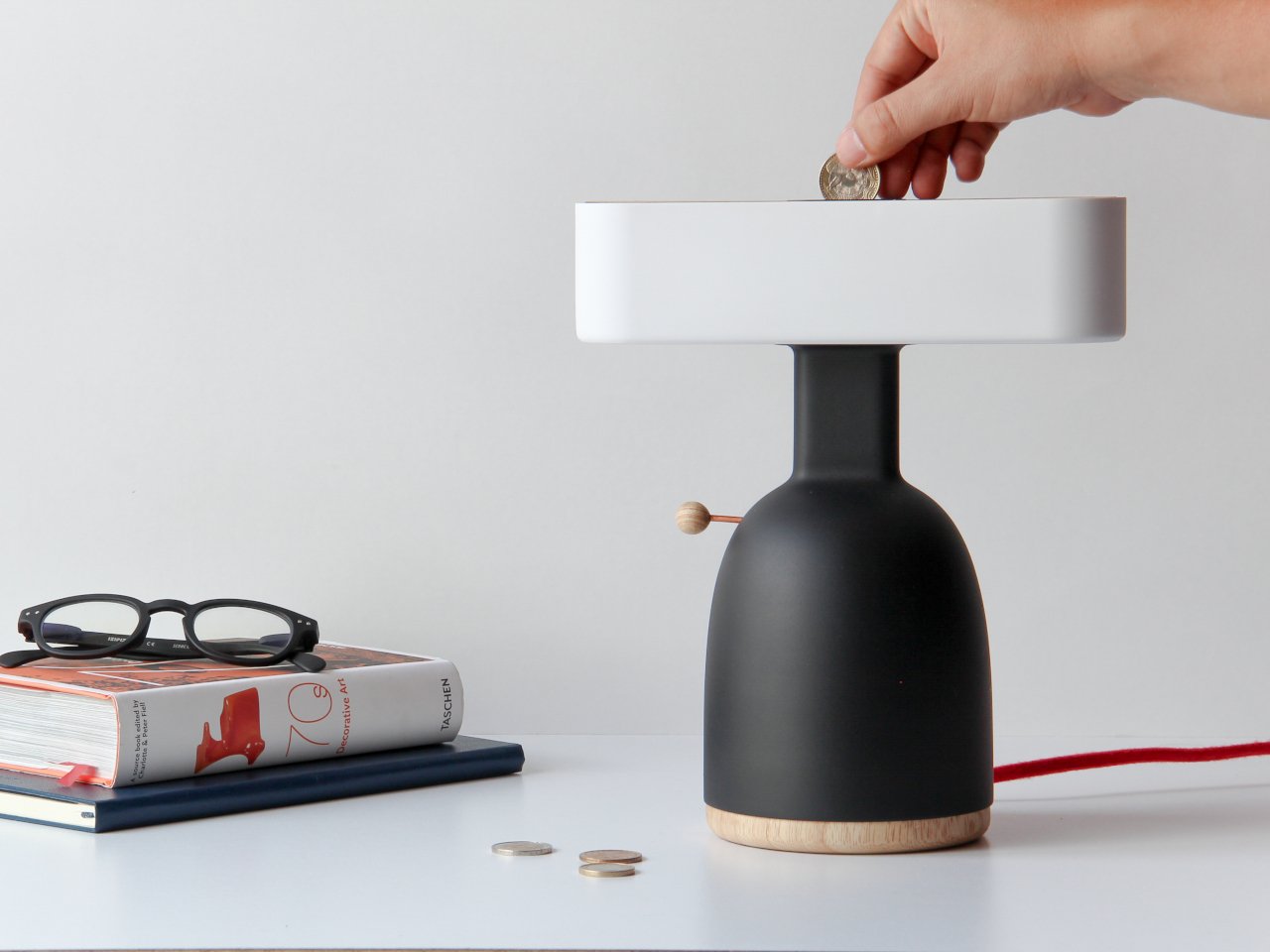We flip switches without thinking, charge devices overnight without considering the cost, and leave lights on in empty rooms like electricity grows on trees. Modern life has made energy consumption so seamless and invisible that most people have completely lost touch with what it actually costs to power our daily habits.
DesignNest’s Coinlamp DINA forces you to confront this disconnect by making you literally pay for your light, one coin at a time. This isn’t just another quirky lamp design trying to stand out in a crowded market. It’s a thoughtful piece of functional art that challenges our relationship with energy, money, and resources.
Designers: Mauricio Sanin, Kelly Durango Cardenas DesignNest
The concept sounds simple, but it feels revolutionary when you experience it firsthand. Instead of flipping a switch or tapping a touch sensor, you insert a coin into a slot to complete the electrical circuit and illuminate the bulb. The lamp only accepts medium and large coins, typically the highest denominations, reinforcing meaningful value.
DINA’s minimalist design combines sustainable materials with thoughtful craftsmanship. The lamp shade uses PLA, a biodegradable plastic that aligns with environmental consciousness. The ash wood body adds warmth and natural texture, while copper provides electrical contacts and a visual accent that draws attention to the coin slot mechanism.
The user experience transforms a mundane action into a small ritual that makes you pause and consider what you’re doing. Inserting a coin feels deliberate and slightly ceremonial, creating a connection between the physical act of payment and the immediate reward of light. The warm glow that follows feels earned rather than automatic.
This selective coin requirement adds another layer of meaning to the interaction. Small coins representing lesser value don’t make proper electrical contact, so they won’t activate the lamp. This design choice reinforces the message that valuable resources require valuable investment, even if that investment is symbolic rather than literal.
The practical implications vary depending on your perspective and living situation. DINA works brilliantly as a conversation starter in shared spaces, a teaching tool for children learning about money and resources, or meditation on consumption habits. However, it’s not ideal for users who need instant, reliable lighting.
Beyond its functional purpose, DINA represents a growing movement in design that uses everyday objects to spark reflection and challenge assumptions. The lamp joins other products that make invisible systems visible, turning routine interactions into opportunities for awareness and education about sustainability, consumption, and value.
The coin acts as a physical key rather than an actual payment, but the psychological effect remains powerful. Each time you reach for change to activate DINA, you’re reminded that light isn’t free, energy has costs, and our consumption choices matter. This simple interaction can shift perspectives about resource use.
DINA makes abstract concepts tangible through playful interaction that feels refreshingly direct and honest. Smart lamps respond to voice commands and gesture controls, but this coin-operated design strips away technological complexity to reveal fundamental truths about value and consumption. Each coin insertion becomes a small reminder that our everyday conveniences carry hidden costs we rarely consider when reaching for light switches.
The post This Lamp Won’t Turn On Unless You Feed It Coins first appeared on Yanko Design.

